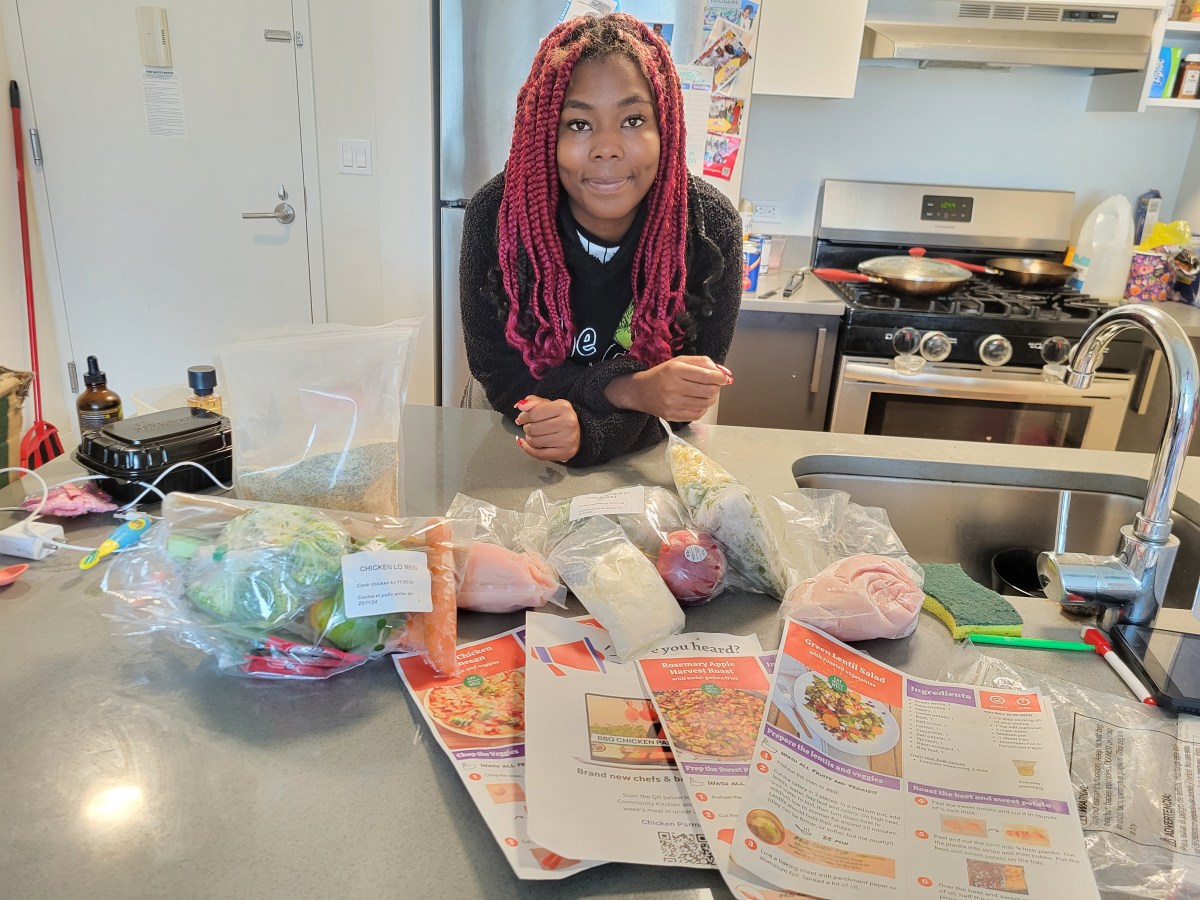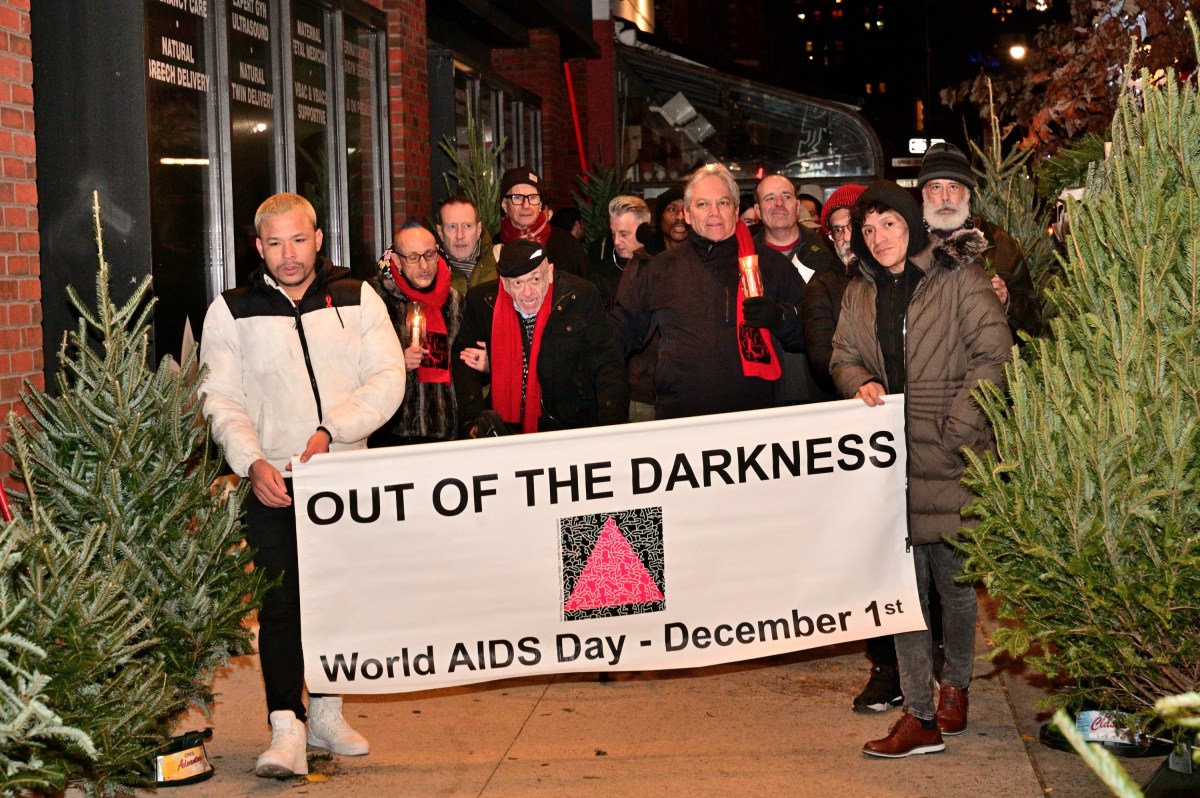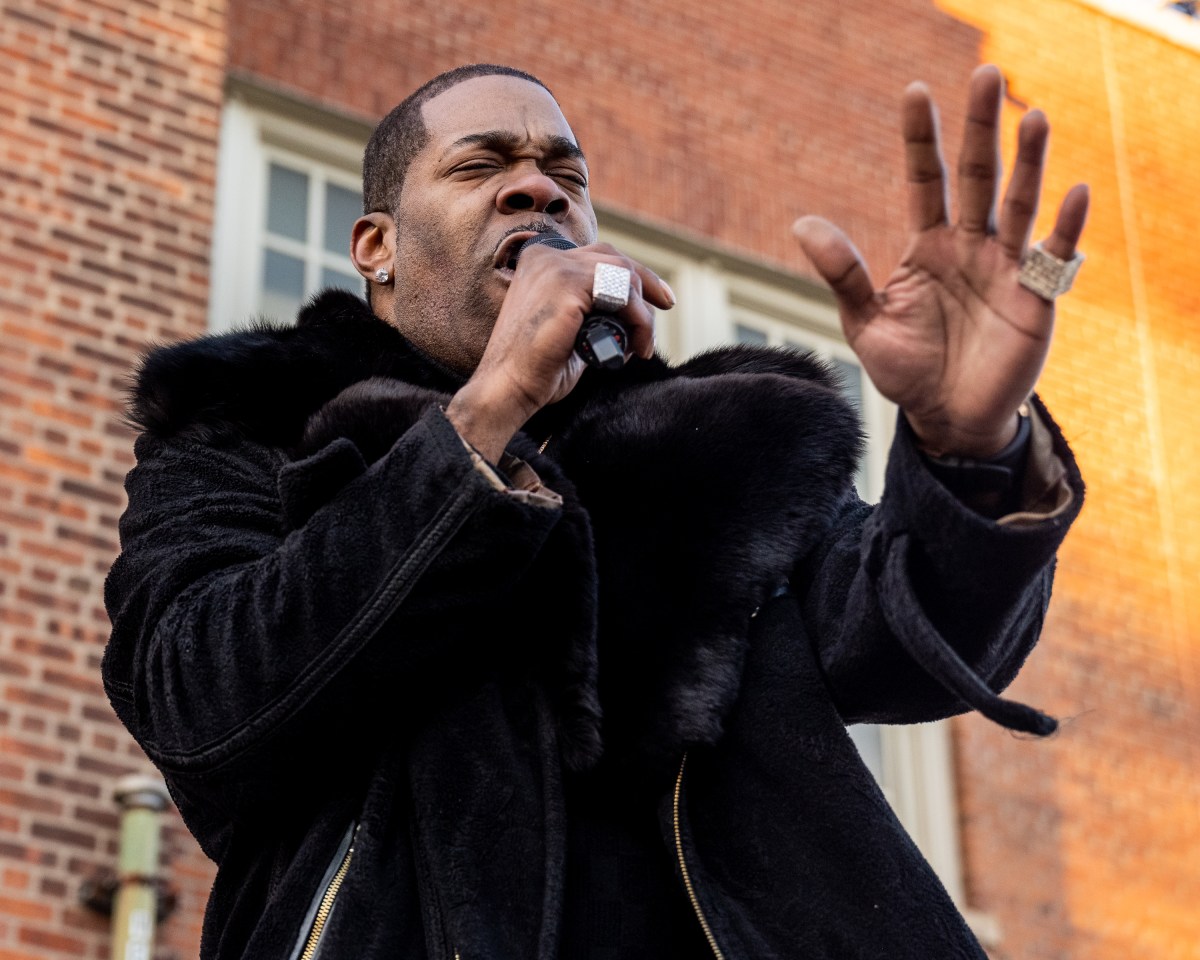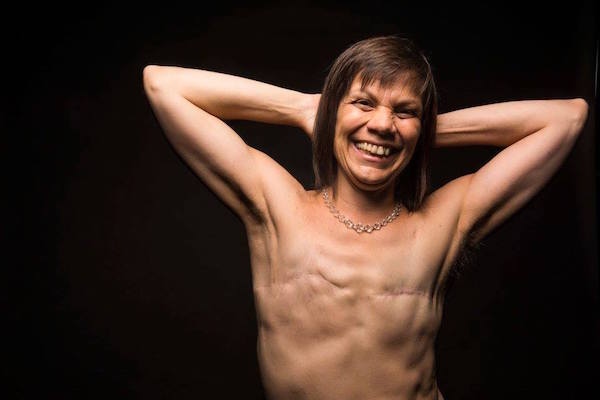
BY WINNIE McCROY | Before you pull out your “I Heart Boobies” bracelet and pink ribbons in support of National Breast Cancer Awareness Month, look at the facts: about 58 percent of women who have mastectomies don’t choose breast reconstruction. Women — especially those who identify as queer — are rejecting the notion that the breasts make the woman. Some have even started the FlatTopper Pride movement, a push for acceptance of women who choose to live with a flat, scarred chest rather than get reconstruction or wear prosthetics to conform to what society deems “normal.”
“October is a very difficult month for those of us who have been diagnosed with breast cancer, whether or not we’re queer,” said Melanie Testa, co-administrator of the FlatTopper Pride movement. This movement first garnered media attention when comedian Tig Notaro was diagnosed with breast cancer, had a double mastectomy, and removed her shirt during her HBO special “Boyish Girl Interrupted.”
“[Going topless] was a long process of getting comfortable with myself as a person, with my body,” Notaro told Esquire at the time, adding, “My body is healed and I’m healthy. It’s something to not have taboo around.”
Notaro’s action opened up the conversation around flat presentation. Like Notaro, Testa had a bilateral mastectomy, saying that it was important to have symmetry in her breasts.
“When I was diagnosed with cancer, I had DD-sized breasts, and I definitely needed a single breast removed,” she told Chelsea Now. “I could not imagine life with a single breast. I would have felt like I needed to wear a prosthesis to even myself out. So I chose flat reconstruction. I wanted to present myself in a way that would make me comfortable.”
What she got instead was a litany of second guesses: from the insurance company, the doctors, and the psychiatrists she was forced to see before she could make her decision. She was especially angered by nurses who said that she would become “gender confused” without breasts.
“I feel as if breast cancer patients are being body policed,” said Testa. “Not all women relate to their breasts in the same way their doctors do. We’re not a one-size-fits-all community; we all have different needs.”
Testa said that our society offers breast reconstruction as a fix, a way for people without cancer to have solace, noting, “It’s a horse and pony show. The real thing is we have breast cancer, which kills women. It’s taking away from the fact that a whole lot of women are getting cancer, some of whom are going to die from it.”
Emily Jensen was only 31 years old when she got her diagnosis of breast cancer. It was August 2012, and she was aware that she had perhaps waited too long to have the large growth above her breast checked out.
“Sure enough, the next day I got a phone call at work to inform me that I had a particularly aggressive and fast-growing tumor and Infiltrating Ductal Carcinoma. The other biopsies showed that the lumps in my right breast were benign,” said Jensen.
Because of the size of the tumor, lumpectomy was not an option. Jensen said she knew she would lose her left breast, and debated for a while whether or not she wanted to keep her right breast. Ultimately she decided it was in her best interest not to, as it too had lumps, for which she had already had a lumpectomy two years earlier.
“From a pragmatic standpoint, it made sense to remove both breasts and then not have to continue to come in for breast imaging and worry if the lumps were malignant. Ultimately my surgeon — an amazingly talented and supportive queer woman of color with an understanding of social oppression — thought this was the best option as well,” said Jensen.
Jensen didn’t always like the attention her breasts received. She sometimes even wore a binder to work. For her, having a flat chest was more in keeping with her gender identity. It was also the option that came with the least amount of medical intervention and trauma possible.
“I loved my breasts, so I wanted them or none,” said Jensen. “I think that my queer identity helped make this choice to stay flat easier. As a more androgynous person, I felt much less pressure to conform to hegemonic beauty standards.”
Jensen advocates that all women have the tools to make the most informed, educated and self-affirming choice possible, even if that choice includes reconstruction or prosthetics. But as part of her effort to allow women to be comfortable in their own skin, she launched the website FlatTopper Pride, to spread awareness of flat presentation as a choice.
“Only when you’re comfortable in your own skin, when you have come to terms with your own body, can you fully heal,” she said. “It is crucial that we call out systems of oppression which keep women from having greater autonomy.”
Even though the majority of women don’t have reconstruction, Jensen said it was rare to see a body like hers before their campaign took off. Before surgery, she had seen only one — another patient her surgeon introduced her to.
The myth is that you are as good as new after surgery — but reconstruction does not create breasts that look or feel genuine, said Testa. What cancer left her is a 17-inch, numb scar across her chest.
Many breast cancer survivors are also furious that the pink ribbon mishegoss takes real attention away from the fact that very few research dollars’ fund research on metastatic breast cancer, which kills 40,000 women a year.
“Many people do not understand how gendered breast cancer treatment is, from the pinking of everything imaginable to the pressure for breast reconstruction,” said Liz Margolies, a Chelsea resident who is head of the National LGBT Cancer Network. “Many of the support groups and workshops have names like ‘Look Good, Feel Great’ and offer hair, makeup and prosthetic advice. The standard of beauty is a stereotypical one that appeals to heterosexual men mainly. Many lesbians and bisexual women find reconstruction abhorrent and unnecessary. For transgender men with breast cancer, the pinking, the reconstruction talk and the beauty workshops intensify their invisibility.”
Margolies said that what interests her most these days is these queer breast cancer survivors who have had mastectomies without any kind of reconstruction or nipple tattoo.
“Their chests are completely smooth, except for the remnants of surgical scars, and the FlatToppers expose them proudly,” said Margolies. “They are a strong visual message that it is okay for all women to make any decision they want about their bodies, and that there are multiple ways to be beautiful and sexy after cancer treatment.”
Hegemonic beauty standards perpetuate capitalism and allow women’s bodies to become commodified, noted Jensen. When this happens, we lose agency and autonomy; people think they can tell women how to treat their own bodies. This is a kind of violence, she said. Such strict beauty standards are impossible for most people to achieve, which leaves many feeling marginalized or not as valuable as human beings.
“Breasts don’t make me. I’m a female woman. I express who I am on a daily basis, sometimes more masculine, sometimes more feminine,” echoed Testa. “I much prefer having my health than my breasts.”
Testa said that she isn’t advocating for all women to remove their breasts and have a flat presentation; she is only advocating for body positivity, to empower women to do what’s best for them. She was originally spurred to act after meeting a 70-year-old breast cancer survivor who hated her single-breast prosthesis her whole life.
“How can you present a body that you’re not in agreement with for so long?,” wondered Testa. “It spurred me to step in and populate the visual references for the flat-chested body. If we have images and role models, we will feel more comfortable with who we are.”
This February, Jensen and Testa joined the Rainbow Fashion 2015 Pride Show in Times Square, posing topless for Play Out Underwear. The two dressed up like Barbie and Ken, to toy with the idea of the perfect body. Walking the runway had an impact on everyone who saw the show, and helped make it happen.
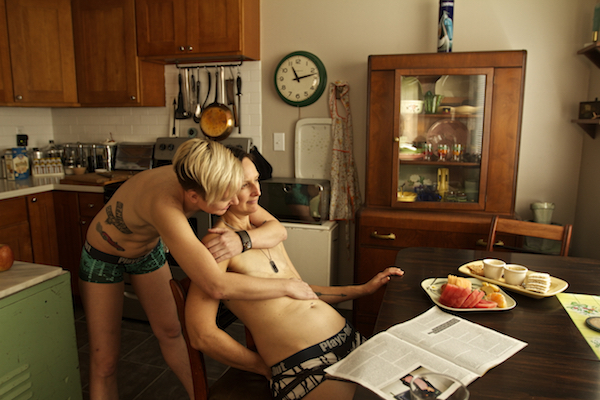
“It was fantastic to walk along with transsexuals, gays and straights. It was an amazing endeavor,” said Testa. The campaign went viral, reaching women from Japan to Greece to Denmark to Russia, and sent scores of average women to the FlatTopper website, where Testa shares her thoughts.
And on September 11, Glamour Magazine showed “What Breast Cancer Really Looks Like.” Jensen was among the five women profiled, as agents of change rather than passive victims of disease.
“I think it was revolutionary for Glamour to use a picture of a FlatTopper. However, it shouldn’t seem revolutionary when the majority of women who have a mastectomy don’t reconstruct! It shouldn’t be shocking to see a surgical outcome like mine,” said Jensen.
“For one, it shows that not all women choose to reconstruct,” added Testa. “It goes a long way toward normalizing this choice. Having those images in a mainstream, straight magazine is very important.”
Jensen notes it was a way to show that breast cancer can be the impetus for effecting positive change in the world. Rather than being something she merely “survived,” breast cancer was the fissure in her life that allowed her to rebuild herself anew, and to work toward making the world a better place.
“Cancers of the breasts and reproductive organs can completely disrupt the gender binary,” says Jensen. “It’s not that I am a beautiful woman, despite not having breasts. It’s that I am a beautiful person, and my having or not having breasts is irrelevant.”
Perhaps movements like FlatTopper Pride will shed light on the fact that instead of just throwing more pink ribbons at it, what society really needs to do is honestly address the growing rate of breast cancer.
“There is no denying our reality any more. Cancer is not going away,” said Testa frankly. “For some reason, society believes that most women reconstruct after breast cancer treatment, and that’s just not the truth. So we are creating an atmosphere where there is safety and respect for all forms of the female body, breasted or not. No matter what our bodies look like or what we’re forced to embrace after breast cancer treatment, we should feel proud, embodied and whole.”
For more information, visit flattopperpride.org.



